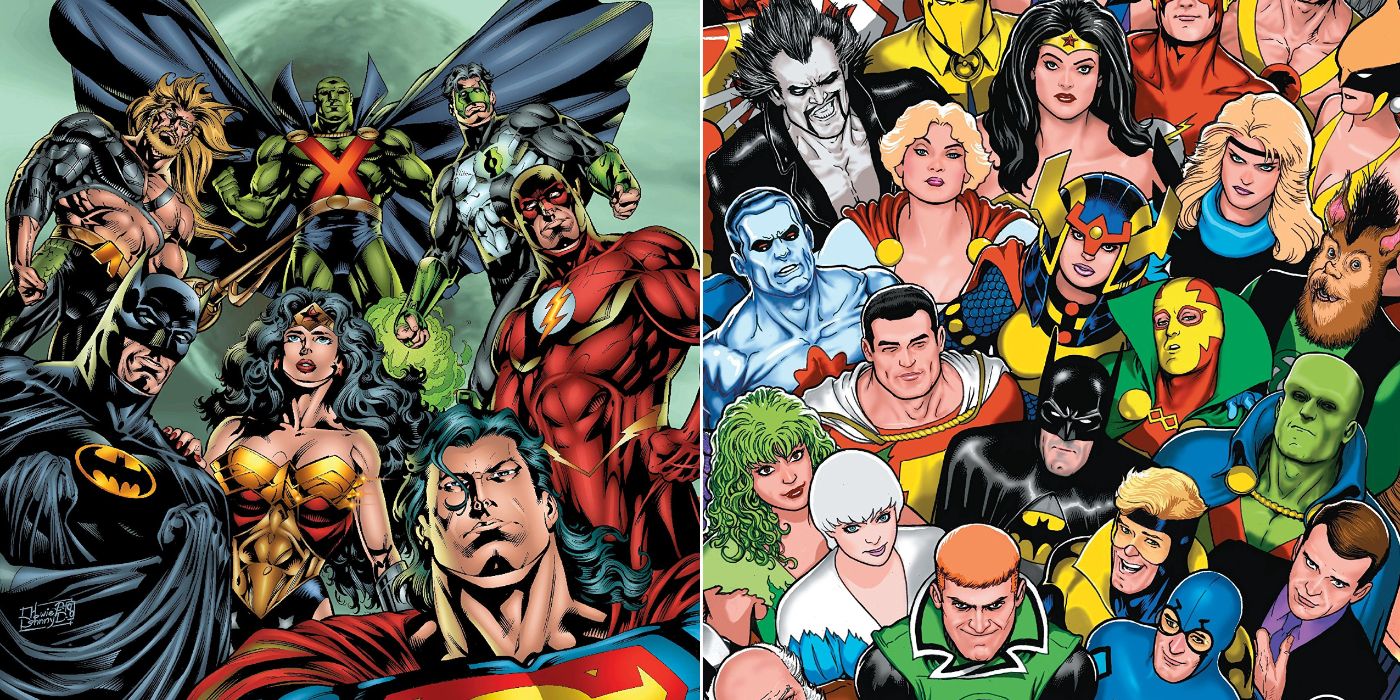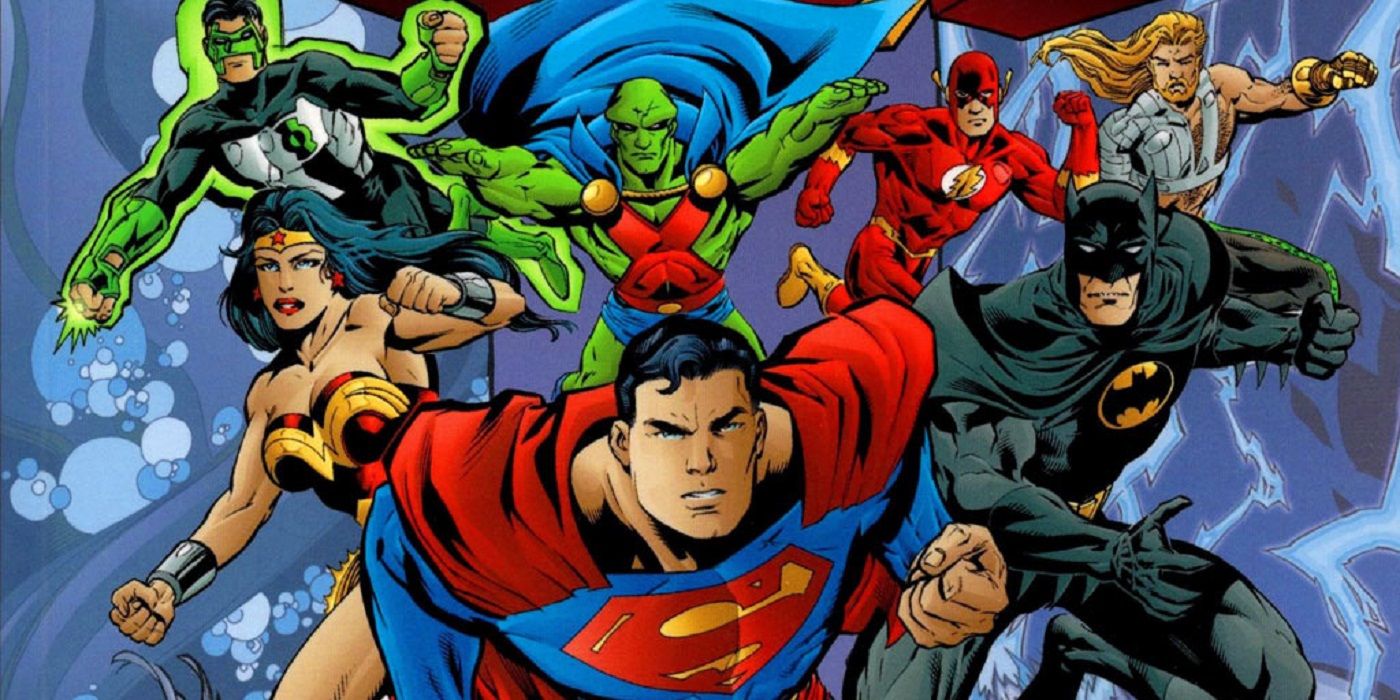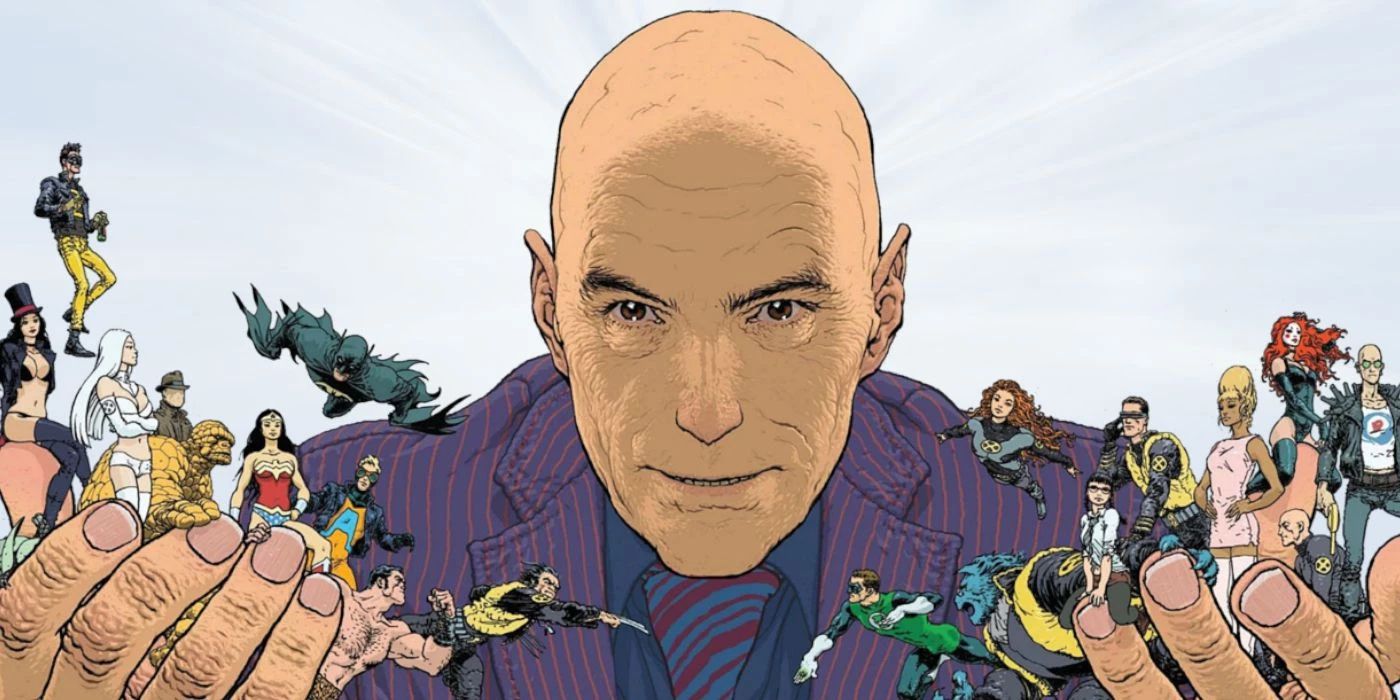Grant Morrison's run on JLA not only saved the Justice League but also DC Comics as a whole. A return to form with the original seven members brought the return of fans as well. Each character had a defined role to play in Morrison's new pantheon of gods, and a reintroduction to Silver Age concepts balanced the weird imagination and humor of comics with the creator's back-to-basics approach. This run would go on to shape the future of DC Comics as the original seven stepped out of the shadows and into the spotlight as Earth's greatest defenders.
Following the reboot of Crisis on Infinite Earths, DC reimagined all of its flagship characters.This meant Justice League International (originally by Keith Giffen, J.M. DeMateis and Kevin Maguire) was comprised of mostly B and C-list characters. Initially, these lesser-known characters kept the comic afloat with a refreshing take on the genre. However, with the noticeable lack of A-list members, the comic eventually began to lose popularity. The early 90s saw DC split the membership of the team among several titles including Justice League Europe, Justice League Task Force and Extreme Justice. This did little to remedy the situation, as readers now had to pick up multiple storylines to follow the team. Sales on the books reflected this, and DC needed to make a major change in order to save their premier superhero team.
Grant Morrison's JLA Revived DC's Justice League
1997 saw the birth of JLA (by Grant Morrison and Howard Porter) which ushered in a new era for DC Comics. Morrison had one goal - to return to Gardner Fox's original vision with a line-up of DC's most well-known characters. Each member would have clear and defined roles, allowing the team and storylines to thrive. Throughout their four-year run, Morrison would transform the team into a modern pantheon of gods. Superman and Wonder Woman became leaders by example. Batman settled into a form-fitting role as a master strategist. Kyle Rayner's Green Lantern and Wally West's Flash were new members of the JLA who often served as viewpoint characters and offered new perspectives on the team as a whole.
Combining the fun and imaginative side of Fox's Justice League and framing the heroes as DC's new pantheon of gods became the blueprint for almost every modern incarnation of the team. Morrison's first story arc was "New World Order" that introduced the new superhero team, Hyperclan and brought back the White Martians as a viable threat to not only the league but the entire world. Shortly thereafter, Morrison penned his most famous JLA story, the iconic "Rock of Ages."
Grant Morrison Created a Blueprint for the Justice League
The seminal work of Morrison went on to influence not only comics, but also DC animated movies, TV shows, and live-action movies. The Justice League animated show began with a three-part story detailing a White Martian invasion that culminated in the team forming their base of operations aboard the Watchtower. In the animated film, Justice League Dark Apokolips War, the story fast-forwards to see the Justice League become a band of freedom fighters opposing Darkseid's rule, homaging Morrison's "Rock of Ages" story.
Grant Morrison's concept that the Justice League is a group of mythological heroes watching over mortals is still echoed throughout the DC Universe. Morrison breathed new life into a franchise that was beginning to fade into obscurity. Sales went from twenty thousand a month to one hundred and twenty thousand thanks in no small part to the stories written by the creator. JLA became DC's top-selling book for the rest of the decade and set the standard for future books, with Morrison themself being a large part of saving and reviving a dying franchise.


